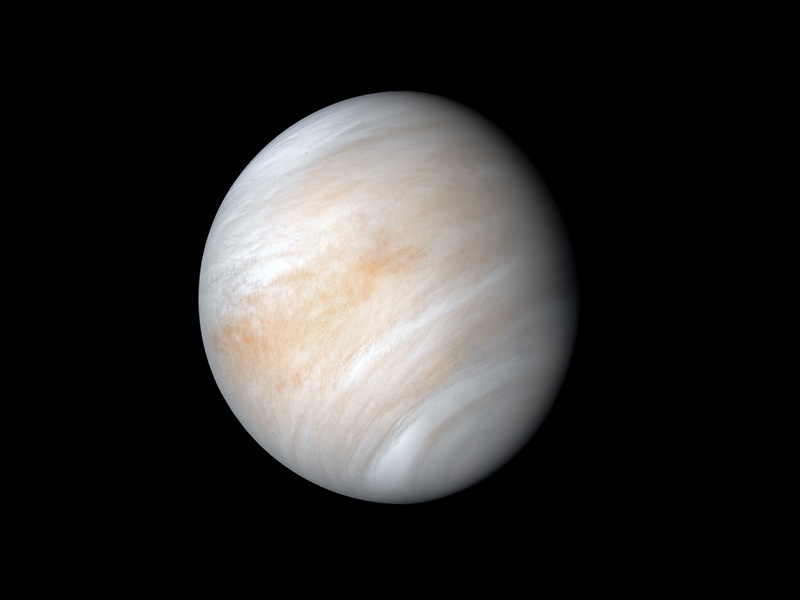In a recent paper accepted to Contemporary Physics, a physicist from Imperial College London uses past missions and recent findings to encourage the importance of searching for life in the atmosphere of the solar system’s most inhospitable planet, Venus. This comes as a 2020 announcement claimed to have discovered the presence of phosphine in Venus’ atmosphere followed by follow-up observations from NASA’s recently-retired SOFIA aircraft in late 2022 that refuted it. Despite this, Dr. David Clements, who is a Reader in Astrophysics in the Department of Physics at Imperial College London, recently told Universe Today that “there is something odd going on in the atmosphere of Venus.”
“The phosphine detection has not gone away, and there are other anomalies, possibly joined by the presence of ammonia,” Dr. Clements told Universe Today. “We don’t know the origin of these anomalies, and much further work is needed, but they are persisting in spite of properly rigorous review. We also may be starting to understand why different observations have given apparently contradictory results.”
For the study, Dr. Clements asks what life is and how we can search for it in the universe but with an emphasis on Venus, referring to the second planet from our Sun in the paper as “an unlikely candidate for astrobiology”. He discusses Venus’ current and ancient planetary conditions, along with Venus’ atmosphere and the alleged detection of phosphine by ground-based telescopes from the James Clerk Maxwell Telescope in Hawaii in 2017 and the Atacama Large Millimeter/Submillimeter Array in Chile in 2019, with follow-up observations by NASA’s SOFIA aircraft in 2021.
This study comes as NASA’s Cassini confirmed the existence of water vapor jets emanating from the south pole of Saturn’s moon, Enceladus, in the 2000s; NASA’s Curiosity and Perseverance rovers presently scouring the surface of Mars searching for signs of past life; NASA gearing up to launch its Europa Clipper mission to examine Jupiter’s water world, Europa in 2024; and launching the Dragonfly mission to Saturn’s largest moon, Titan in 2027. But given all those potential targets for astrobiology, how much of a priority is searching for life in the atmosphere of Venus?
“More work is needed before we can add Venus to the list of prime sites for the possibility of life,” Dr. Clements told Universe Today. “That work is being done, both from the ground and from space missions. The interesting thing is that Venus is a more convenient target than (say) Europa or Enceladus, so missions there are cheaper and faster.”
One such upcoming NASA mission specifically designed to study Venus’ atmosphere is the DAVINCI mission, which is slated to launch in 2029 and arrive at Venus in 2031. With its suite of instruments, DAVINCI will examine Venus’ atmosphere like never before. This includes dropping a titanium probe through the atmosphere where it will collect thousands of measurements as it makes its hour-long descent to the surface. Scientists don’t expect it to survive the landing due to Venus’ crushing air pressure and searing heat, but they hope to squeeze almost 20 minutes of extra science if it does.
“I think DAVINCI will be very important as it will be able to provide far better ‘ground truth’ than we currently have,” Dr. Clements told Universe Today. “There is also the chance that some additions to the instrumentation will add to its capabilities to look for specific things like phosphine and ammonia.”
With a plethora of data from past observations, along with upcoming missions to Venus, Dr. Clements conveyed to Universe Today that “the phosphine on Venus story continues, more data is coming from the ground and space, and that we still don’t know if the presence of phosphine is down to life or some complex abiotic chemistry that we do not currently understand.”
As always, keep doing science & keep looking up!

